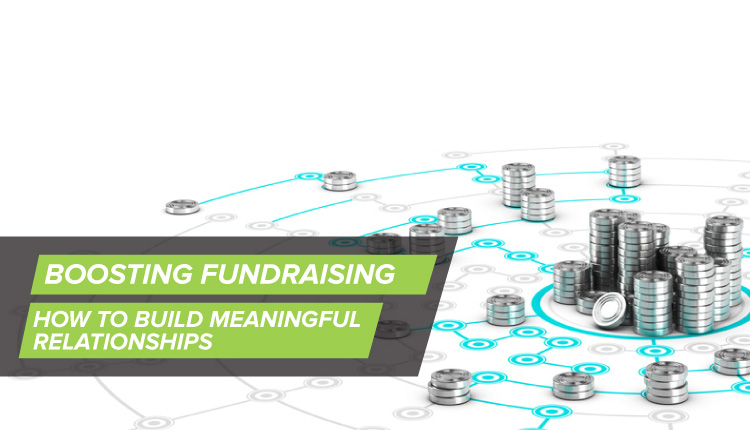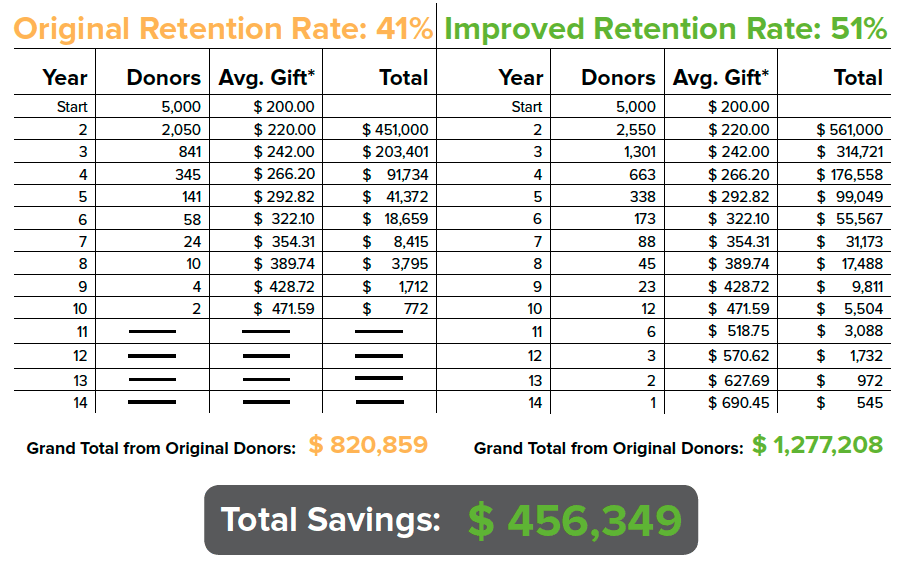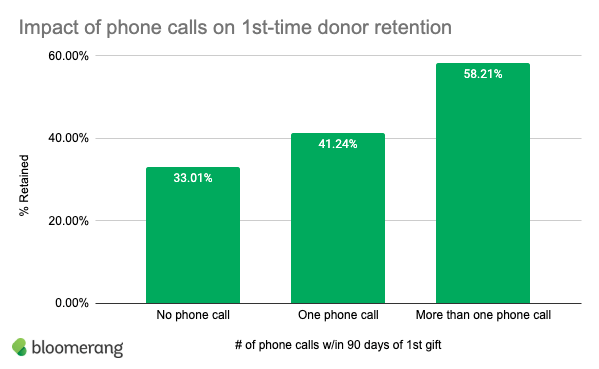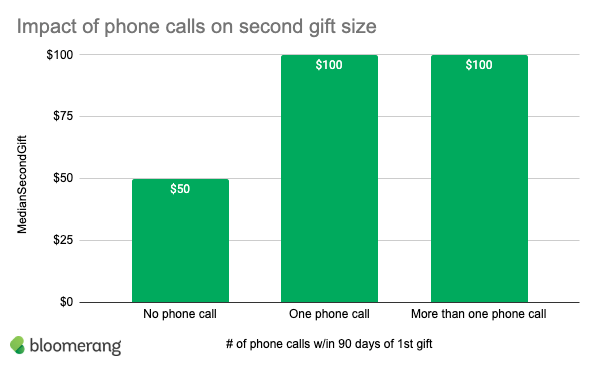
The following is a guest post by Steven Shattuck, Chief Engagement Officer at Bloomerang and the guest host on a recent Coronavirus Townhall session.
Nonprofits like yours rely on donations now more than ever before. With the pandemic shaking up society and a turbulent economy, organizations are doing everything they can to maintain their funding.
Many ask the question: Is it still ok to ask people for donations during the coronavirus pandemic? That answer is a resounding YES.
Actually, it’s highly encouraged to keep up fundraising efforts, especially your donor communications. However, you might want to change your strategy or approach to these communications slightly. For example, adjust what you’re asking for, your ask amounts and show additional gratitude for those who have given, and who give during this time.
You should also focus on fostering relationships with your donors, even if they’re unable to give (or give as much) right now.
This strategy helps you retain more supporters both during the crisis and after it ends. Supporters will know your relationship with them is real and genuine when you stand by their side both during the good times and the bad. This can result in a major boost in your fundraising revenue.
According to Bloomerang’s donor retention guide, just a 10% increase in donor retention can result in thousands of dollars in additional fundraising revenue.

Just imagine, putting in a little effort to develop donor relationships now will result in greater retention after the crisis ends. This will put you in a better position for the future to raise additional funds and make a bigger difference in your community.
To develop this relationship during a time of crisis, we recommend the following strategies:
- Ask your donors how they’re doing.
- Provide helpful and valuable information.
- Pick up the phone and call new donors.
- Set up virtual meetings.
- Find new ways to show impact.
While fundraising may be difficult during the time of crisis, adjusting your strategy and focusing on developing relationships will help you not only weather these difficult situations, but also come out of them stronger than ever before.

1. Ask your donors how they’re doing.
Like with any relationship, building relationships with your supporters starts with effective communication. And the first thing you should do in these conversations is ask your donors how they’re doing.
Coronavirus is causing hardships for everyone. Supporters may not be working or they may be working from home. They may have kids home from school demanding their attention. Or they may even know someone who has been diagnosed with the virus! You never know what supporters are going through until you ask.
Asking donors how they’re handling everything shows them that you care and provides the opportunity to make an immediate connection with them.
When they share something about their own lives, maybe you’ll be inspired to share something about yours in return. This vulnerability on both sides is what creates the bond between you and your supporter. Then, you can dive into fundraising details, importance, and impact.

2. Provide helpful and valuable information.
Everyone wants new information about coronavirus and the impact it has on the world. They especially want to know the impact this virus has had on their lives, as well as the organizations they support. As a part of your supporters’ lives, you should be sure to provide them with helpful and valuable information.
Examples of the type of information you should provide to your supporters include:
- What your organization is doing in response to the virus. If your staff members are working from home, providing free services, or sanitizing your headquarters, tell your supporters about it.
- Opportunities provided to supporters by the government. The CARES Act provides above the line tax deductions for gifts made to nonprofit organizations in the foreseeable future. This means that even your supporters who don’t itemize on their tax forms will see an additional deduction when they file their 2020 taxes.
- Additional ways your donors can support your efforts. Be specific about what your organization’s needs are during this time. Tell supporters what you want to accomplish immediately with their donations, in-kind giving, and volunteer hours.
Specific and valuable information helps supporters because it shows that your organization is working to be transparent with them.
Plus, making the commitment to this type of information will hold your nonprofit team members accountable to respond promptly to the virus. Both your nonprofit and your supporters are counting on your responsible actions.

3. Pick up the phone and call new donors.
Crisis fundraising has a tendency to generate gifts from new donors, even if new donor acquisition isn’t your primary focus during this time.
While a first gift is great, the second gift that a supporter gives to a nonprofit is truly the “golden donation.” This is because only about 20% of donors give a second donation to nonprofit organizations. However, after that golden donation is contributed, about 60% of donors will choose to give a third time (and hopefully continue to in the future).
Therefore, one of the most effective ways to increase your overall donor retention is to increase your new donor retention rate first. You can do this by showing your supporters that you care about them.
Once a donor gives to your organization, their information should be streamlined into your nonprofit’s CRM to store data such as the donor’s contact information, name, gift amount, and any other information they may have provided while contributing. Using this data, you can reach out to these new supporters and start a personal relationship with them.
Our recommendation? Call your new donors.
Bloomerang’s study showed that donors who received no call after their first donation were retained about 33% of the time. Those who were called once within 90 days of their first gift were retained 41%. Those who were called more than once were retained 58% of the time.

As you can see, calling donors soon after their first gift results in dramatically higher new donor retention rates. Not only that but supporters who were called by the nonprofit were also shown to increase their gift size more quickly.

While these results may be slightly different in an economic environment that provokes financial hardships, these statistics show that organizations who call donors start the relationship sooner and encourage future contributions.

4. Set up virtual meetings.
In-person conversations have been halted for the time being. For the health and safety of the community, we recommend that your organization keep in mind the regulations encouraged by the CDC and WHO. Social distancing and staying at home can save lives. The last thing you want to do is put your team or your supporters in danger.
There are alternatives that your organization can employ to keep everyone safe while communicating with your supporters. One of the most popular and effective ways to keep up with donors is to set up virtual meetings.
These meetings are a great way to keep up with your major and mid-level donors. Though you probably prefer to meet these supporters in person during normal circumstances, virtual meetings can be just as engaging.
Here are our tips for running successful virtual meetings:
- Use both video and audio to communicate during these meetings. Video allows you to read facial expressions in addition to audio, which enables clearer communication.
- Create an agenda for these meetings. Lay out your purpose for the call prior to the meeting. Then, make sure to keep everyone on track during the meeting itself.
- Ask for supporter input about your organization’s next steps. Tell them what you’re planning to do in the coming weeks or months, then see what your supporters think. Showing appreciation for their ideas and input show donors that they’re true partners with your nonprofit.
- Keep in mind that donors’ affinity to give may be lower. Economic hardship is affecting everyone differently. Your mid-tier or major donors may not be able to give in the same quantities (or at all) at this time. Be open to this idea and express your gratitude for their past generosity and anything they can give now.
Virtual meetings are a great way to keep up with donors and solicit donations while still showing that you care and want to build a relationship.

5. Find new ways to show impact.
No matter the economic climate, donors are motivated by impact. They want to make the biggest impact possible for your organization with their money. In an economic climate that’s left so many people out of work or with less spendable income, it’s even more vital to express and exemplify the impact your supporters can make for your nonprofit.
Your nonprofit might choose to:
- Tell frequent stories in emails and social media posts. You can’t tell too many stories about what your programs and services team is providing to service recipients.
- Provide in-kind giving opportunities, when possible. Provide a wish list to donors and ask them to purchase things online that your nonprofit needs. This is a great alternative to asking for money. Amazon wish lists make it easy on potential shoppers, and shows off tangible impact.
- Express impact in your thank you letter. After a donor gives, reiterate what their donation has accomplished for your nonprofit. This provides them with additional satisfaction. If you’re looking for a template to help write this letter, Fundraising Letters offers free downloads.
Make sure that your organization’s fundraising software is customizable and can show immediate impact in these ways. Here’s a guide if you’re not sure what you’re looking for in this type of solution.
Fundraising during a pandemic is difficult, to say the least. However, if you focus on building relationships with your supporters, you’ll come out of the crisis stronger. These 5 tips will help you get started. Good luck!
About the author: Steven Shattuck is Chief Engagement Officer at Bloomerang and Executive Director of Launch Cause. A prolific writer and speaker, Steven is a contributor to “Fundraising Principles and Practice: Second Edition” and volunteers his time on the Project Work Group of the Fundraising Effectiveness Project and is an AFP Center for Fundraising Innovation (CFI) committee member.

Asking whether if it is the right time for your nonprofit to ask is a no-brainer. The answer is always YES. If these occurred before the COVID-19 pandemic the answer would still be YES, what more now when many people need our help? This is the most perfect time for our nonprofit to ask!